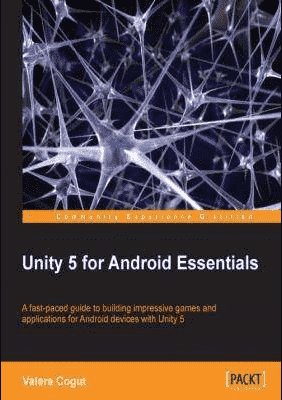书籍简介:
This book is perfect for game developers who want to learn how to develop, optimize, and publish games for Android devices in a quick and easy manner using Unity 5. This book assumes a basic knowledge of game design concepts and/or some experience with other game technologies such as Unreal Engine 4, CryEngine, or GameMaker.
作者简介:
Valera Cogut
出版时间:
2015-08-05
章节目录:
Unity 5 for Android Essentials
Table of Contents
Unity 5 for Android Essentials
Credits
About the Author
About the Reviewers
www.PacktPub.com
Support files, eBooks, discount offers, and more
Why subscribe?
Free access for Packt account holders
Preface
What this book covers
What you need for this book
Who this book is for
Conventions
Reader feedback
Customer support
Downloading the example code
Errata
Piracy
Questions
Setting Up and Configuring an Android Platform
Configuring Unity 5 for Android devices
APK expansion files in Unity 5
Overview
Formats
The updating process
Setting up expansion files in Unity 5
Building for Android devices
Unity License Comparison Overview
NavMeshes, pathfinding, and crowd simulation
Level of Detail (LOD) support
Audio filters
Video playback and streaming
Full-fledged streaming with asset bundles
Hundred thousand dollar turnover
Mecanim – IK Rigs
Mecanim – sync layers and additional curves
Custom splash screen
Build size stripping
Lightmapping with global illumination and area lights
HDR and tone mapping
Occlusion culling
Light probes
Static batching
Render-to-texture effects
Fullscreen postprocessing effects
NavMesh – dynamic obstacles and priority
.NET socket support
Profiler and GPU profiling
Real-time directional shadows
Script access to asset pipeline
Summary
Accessing Android Functionality
Creating Java and native C plugins for an Android platform
Creating plugins in C
Creating plugins in Java (Eclipse IDE)
Writing Java code in plugin
Turning on and off a hardware flashlight
On Unity side
Exporting and importing a JAR library from Eclipse into Unity
Importing AndroidManifest
Using Java plugins in Unity scripts
Anti-piracy check
Vibration
Activity Indicator
Screen orientation
System information
Accessing the Android sensors and features within Unity 5
Acceleration
Gyroscope
Compass
Summary
High-end Graphics for Android Devices
Physically-based shaders
Basic shader concepts
The vertex shader
The geometry shader
The pixel/fragment shader
Shading languages
Cg
Unity shaders in Cg
A custom diffuse lighting model
A basic reflection environment
Masked texture reflection
Lighting model techniques
The Lit sphere model
Realistic rendering
Global illumination
Practicing in shader optimization
Best case practice
Summary
Animation, Audio, Physics, and Particle Systems in Unity 5
New Mecanim animation features in Unity 5
State machine behavior
State machine transition
Asset creation API
Direct blend tree
Programmatically creating assets by Unity 5 API
Creating the controller
Adding parameters
Adding state machines
Adding states
Adding transitions
Going deeper into new audio features
Mood transitions
Physics and particle system effects in Unity 5
Particle system performance tips and tricks
Legacy versus Shuriken Unity's built-in particle systems
Particle system tips
Summary
Asset Bundles in Unity 5 Pro
An overview of the asset bundles in Unity 5
Downloading new code and data in real time for Android devices
Managing loaded asset bundles
Asset bundles and binary data
Asset bundles and scripts
Asset bundle dependencies
Safeness techniques in practice
Summary
Optimization and Transformation Techniques
Occlusion culling and level of detail in optimization techniques
Optimizing by LOD
Unity C# and Unity JS optimization tips and tricks
Transforming Unity C# code into Unity JavaScript code and vice versa
JavaScript variables and types
C# variables and types
Converting types in Unity JS
Converting types in Unity C#
Unity JS function versus Unity C# function
Unity JS return versus Unity C# return
Unity JS yielding versus Unity C# yielding
Unity JS directives versus Unity C# directives
Summary
Troubleshooting and Best Practices
Measuring performance with the built-in Android profiler
General CPU activity
Rendering statistics
Detailed Unity player statistics
Detailed script statistics
Detailed statistics on memory allocated by scripts
Debugging Android devices with the Unity profiler tool
Profiler timeline
The CPU area
The Rendering area
The Memory area
The simple view
The detailed view
The audio area
The physics area
The GPU area
Real-practice techniques
The high-speed, off-screen particles technique in Unity
The pool technique
The scriptable profiler tool
Unity profiler tricks
Creating a simple profiler
Summary
Index
封面图:
